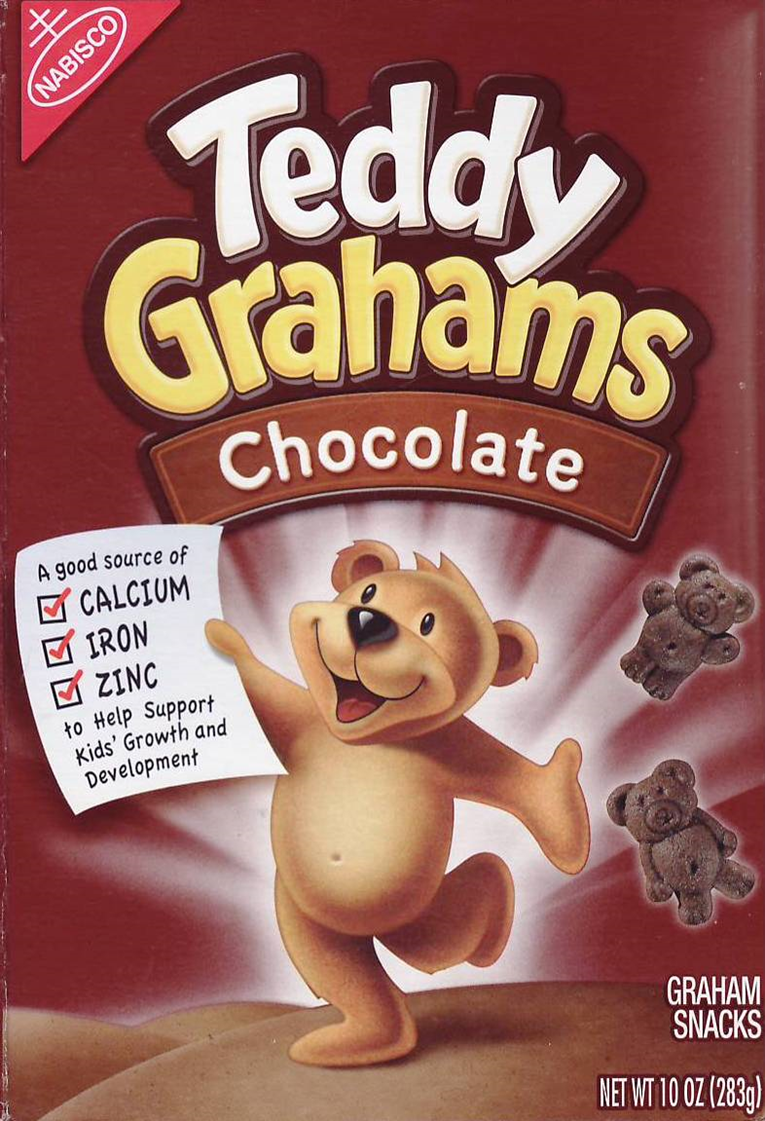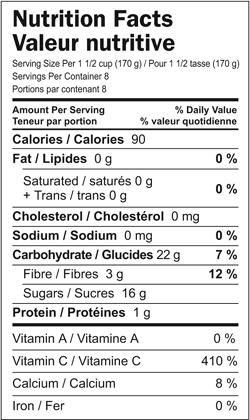38 nutrients on food labels
Understanding Food Nutrition Labels - American Heart Association When the Nutrition Facts label says a food contains "0 g" of trans fat, but includes "partially hydrogenated oil" in the ingredient list, it means the food contains some trans fat, but less than 0.5 grams per serving. So, if you eat more than one serving, you could end up eating too much trans fat. Optional Nutrients On The Food Label - LabelCalc Since these nutrients are thought to play a more critical role in human health, they are required on the nutrition label. In addition to the above nutrients, the following nutrients are optional: Vitamin D. Vitamin E. Thiamin (Vitamin B1) Riboflavin (Vitamin B2) Niacin (Vitamin B6) Folate. Vitamin B12.
Food Labels | Nutrition.gov Learn the difference between total sugars and added sugars, and discover how the Nutrition Facts Label can help you choose foods that are lower in added sugars. Folate and Folic Acid on the Nutrition and Supplement Facts Labels HHS, Food and Drug Administration, Center for Food Safety and Applied Nutrition

Nutrients on food labels
Understanding Nutrition Facts on Food Labels - WebMD After fats, carbohydrates, dietary fiber, sugars, and protein are listed on the food label. These items are followed by specific nutrients in the food, such as vitamin A, vitamin C, calcium, and iron. New label guidelines will replace vitamins A and C with vitamin D and potassium and list added sugars on the panel. Food Labels | Real Life, Good Food Serving size: all of the nutrient values are listed per serving, so if you typically eat a whole package, multiply the nutrient values times the number of servings in the package.; Check calories: Again, calories are listed per serving.This label is for a package that contains two servings. If you ate the whole package, you'd actually be getting 500 calories. Food Labeling & Nutrition | FDA Food labeling is required for most prepared foods, such as breads, cereals, canned and frozen foods, snacks, desserts, drinks, etc. Nutrition labeling for raw produce (fruits and vegetables) and...
Nutrients on food labels. Understanding Food Labels | Extension | West Virginia University Aim low on fat, cholesterol, and sodium. Limiting these nutrients can reduce your risk of many chronic diseases such as heart disease and diabetes. Look for foods that are high in fiber, Vitamin A, Vitamin C, Calcium, and Iron. These key nutrients will help fight disease and support a healthy body. What do the claims really mean? Understanding Food Labels - Nutrition: Science and Everyday Application The FDA uses the following definitions for interpreting the %DV on food labels:4 5%DV or less means the food is low in a nutrient. 10% to 19%DV means the food is a "good source" of a nutrient. 20%DV or greater means the food is high in a nutrient. Daily Value on the New Nutrition and Supplement Facts Labels The Nutrition Facts label must list total fat, saturated fat, trans fat, cholesterol, sodium, total carbohydrate, dietary fiber, total sugars, added sugars, protein, and certain vitamins and... Understanding Food Labels | The Nutrition Source | Harvard T.H. Chan ... Under the Food Allergen Labeling and Consumer Protection Act of 2004, eight major food allergens—milk, fish, tree nuts, peanuts, shellfish, wheat, eggs, and soybeans—are required to be listed in a "contains" statement near the Ingredients list if present in a food. An example would be "contains wheat, milk, and soy."
How To Read Food and Beverage Labels - National Institute on Aging The U.S. Food and Drug Administration (FDA) requires a Nutrition Facts label on most packaged foods and beverages. At the top of the Nutrition Facts label, you will find the total number of servings in the container and the food or beverage's serving size. How to Understand and Use the Nutrition Facts Label | FDA Dietary fiber, vitamin D, calcium, iron ad potassium are nutrients on the label that Americans generally do not get the recommended amount of. They are identified as nutrients to get more of.... Nutrition Labels 101: What's Required? What's Optional? The FDA requires nutrients that fall into one of these categories be listed on a nutrition label only when it's necessary to bolster or prove the label's food label or marketing claim. To best help consumers make informed decisions about their food choices, the FDA says all nutrition labels must include these 13 components. Changes to the Nutrition Facts Label | FDA The Nutrition Facts label on packaged foods was updated in 2016 to reflect updated scientific information, including information about the link between diet and chronic diseases, such as obesity...
The Basics of the Nutrition Facts Label Step 4: Check Out the Nutrition Terms. Low calorie: 40 calories or less per serving. Low cholesterol: 20 milligrams or less and 2 grams or less of saturated fat per serving. Reduced: At least 25% less of the specified nutrient or calories than the usual product. Good source of: Provides at least 10 to 19% of the Daily Value of a particular ... Food label reading guide | Nutrition Australia Food and drink labels will include information about the product, where and when it was made and a statement of ingredients, as well as any warnings or allergen statements. Most food or drink packages have a Nutrition Information Panel (NIP) which tells you the quantity of various nutrients a product contains per serve and per 100g or 100 ml. Learn How the Nutrition Facts Label Can Help You Improve Your Health Nutrients Required on Label Vitamin D and potassium values are required. Calcium and iron will continue to be required. Vitamins A and C will no longer be required but can be included on a voluntary basis. Slight Decrease in Sodium Allowance The daily limit for sodium decreased slightly from 2,400 mg per day to 2,300 mg per day. Nutrient Claims on Food Labels | Home & Garden Information Center The Food and Drug Administration (FDA) requires that a nutrient content claim on a food package be based on how much of the food most people usually eat or drink. This is called the reference amount. Serving size and reference amount are usually the same. Always check the label because sometimes the serving size and reference amount are different.
Food Labels & Nutrition Facts - Ask the Dietitian® Food Labels & Nutrition Facts. You have been so kind to take the time to answer my questions. Thank you so very much. Please permit me a couple of follow-up questions. The US Dietary Guidelines recommend moderate intake of sugar which includes sugar you add to food at the table as well as sugar added by food manufacturers.
Nutrition: Lesson 2 Nutrient & Food Label Facts Nutrients are vitamins, minerals, carbohydrates, proteins, fats, and water. These six essential nutrients are something we all need for growth, energy, and for maintenance and repair of our cells. Eating a well-balanced diet with a wide variety of foods will provide you with the right amount of all the nutrients you need. 1) Water
Your Ultimate Guide to Food and Nutrition Labels - Aaptiv Labels. "Food labels are basically any claim made on a food product, from hard-core facts regulated by government agencies—FDA, USDA—to promotional hype generated by advertising agencies," Passler explains. This is where labels can get misleading. Terms such as "light" and "enriched with" have specific, regulated meanings.

FDA study: Do added nutrients sell products? (Of course they do) – Food Politics by Marion Nestle
The New Nutrition Facts Label | FDA The U.S. Food and Drug Administration (FDA) has updated the Nutrition Facts label on packaged foods and drinks. FDA is requiring changes to the Nutrition Facts label based on updated scientific...
Understanding Food Nutrition Labels | American Heart Association When the Nutrition Facts label says a food contains "0 g" of trans fat, but includes "partially hydrogenated oil" in the ingredient list, it means the food contains some trans fat, but less than 0.5 grams per serving. So, if you eat more than one serving, you could end up eating too much trans fat.
Reading Food Labels (for Parents) - Nemours KidsHealth A food with 5% or less of a nutrient is low in that nutrient. A food with 10%-19% of a nutrient is a good source of that nutrient. A food with 20% or more of a nutrient is high in that nutrient. The information on food labels is based on an average diet of 2,000 calories per day.
How Do You Know Your Food's Nutrition Facts Label Is Accurate? NIST's measurements are accurate to within 2% to 5% for nutrient elements (such as sodium, calcium and potassium), macronutrients (fats, proteins and carbohydrates), amino acids and fatty acids. As you may have noticed, most of your favorite food items have recently updated their nutrition facts labels.
Easy Guide to Understanding Food Labels When You Have High ... - MyDoc 1. Choose products low in saturated fat, trans fat and cholesterol. When shopping for food, use the nutrition information panel to compare and choose products with lower fat, saturated fat and cholesterol content. Saturated fat is a type of fat that raises your total and LDL cholesterol and risk of heart disease, so intake should be limited.





Post a Comment for "38 nutrients on food labels"